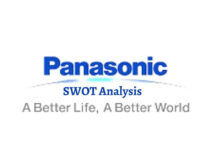Swot analysis of Patagonia Inc. Patagonia is a US outdoor sustainable clothing company. Yvon Chouinard was the founder of the company, and he laid the foundation of the clothing brand on May 09, 1973. The headquarter of the company is in Ventura, California, USA.
Patagonia’s main products and services are;
- Outdoor gear,
- Second-hand clothes,
- Camping food,
- Accessories,
- Bicycle parts,
- Bicycles,
- Sporting equipment,
- Sporting goods,
- Sleeping bags,
- Backpacks,
- Outdoor shoes,
- Outdoor apparel.
The revenue of Patagonia in the 2nd quarter of 2021 was 2.73 million dollars, out of which the gross profit of the company was 0.42 million dollars. The company produced 2519 equivalent ounces of gold and sold 1457 equivalent ounces of gold. Roundabout over 1000 employees are working for the company.
Patagonia’s top competitors are;
- Under Armour,
- Adidas,
- Nike,
- Osprey,
- Scheels,
- Belstaff,
- KEEN,
- Carhartt,
- Carve Designs,
- Arc’teryx,
- Burton,
- Farfetch,
- LL Bean,
- Canada Goose,
- Columbia Sportswear,
- Amer Sports,
- Marmot,
- North Face.
Today, we’ll discuss a swot analysis of Patagonia. It would analyze the internal strengths and weaknesses of the clothing brand, and the external available opportunities and threats that the company has to face. Here’s the swot analysis of Patagonia as follows;
Strengths of Patagonia
Loyal Customer
Patagonia has built a loyal database of customers with its environmentally friendly policies. The clothing brand has always put the needs of the environment and the community first. Customers are aware of it, and they value the brand.
Community Focused
The focus of the company is on society and community rather than profitability. The brand made a donation of 10 million dollars to the environmentalist and community activists from President Trump’s tax cut program.
Marketing Strategy
Patagonia targets the desires and wants of customers in its marketing campaigns in order to attract their attention of customers. The company plays the environmental card to target environment conscience customers like global climate strikes.
Eco-Friendly
As we know that eco-friendly trends are growing among customers. Patagonia is exploiting it up to a full extent by sharing one percent of its profit with the environmental cause and activists. Most importantly, the company discourages customers from buying its new clothes, instead, it asks them to buy the 2nd hand clothes in order to reduce waste.
Reputation
Through its environmentally sustainable policies and community-based products and services, the company has established a strong reputation in the market and among customers.
HR Strategies
Patagonia takes care of its employees very well. In fact, the company kept on paying full salaries to its employees during the lockdown and pandemic. It shows the company’s commitment to the employees, and it has amplified their morale and productivity.
Philosophy
The clothing brand follows a unique philosophy of “buying quality rather than buying more products.” It’s to encourage customers to purchase 2nd hand products of the company rather than the new. This philosophy has increased the company’s profitability by 30%.
Private Ownership
Patagonia is a privately owned business rather than a public company. It offers the company a unique competitive that the band could change its policies without consulting with shareholders and investors.
Purposeful Strategies
The company includes the 5P in its strategy and that is purpose rather than 4Ps of marketing like the product, price, place, and promotion.
Weaknesses of Patagonia
Reliance on the US Market
The USA is the main retail market for the sale of its products and services. It makes the company vulnerable to a lot of external environments due to low capital diversity.
Political Engagement
When a company gets involved in social issues for the welfare of society, then it exposes the company to the toxicity of politics. For instance, the brand’s founder was a fierce critic of the Trump administration, and it pushed away a lot of conservative and republican customers.
Limited Market Presence
According to an estimate, Patagonia has got hundreds of stores and is operating its business in 10 countries and 5 continents worldwide. The company has a limited market presence compared to the competitors’ brands.
Depending on Suppliers
Patagonia depends on Asian suppliers and manufacturers for the production of clothes like any other clothing brand. Those suppliers have to follow the company’s philosophy and mission. Although the outsourcing option provides the company costing advantage, it also exposes the company to supply chain issues.
E-commerce Weak Area
Many businesses and companies are taking their stores online in order to take advantage of the digital age and online shopping trends. Patagonia is having issues adopting e-commerce. However, it’s one of the major weaknesses of the company under such circumstances and the latest trends.
Opportunities available to Patagonia
Product Line Extension
As we know that Patagonia manufactures outdoor clothing and other relevant products and services. The company should extend its product and include various other items like 2nd hand clothes, sportswear, and daily clothing.
Exploiting E-commerce
The pandemic has amplified online shopping trends. Nowadays, customers prefer to do online shopping and want a better experience. The clothing brand should put extra focus on establishing its online store, and make it easier for customers to shop online.
Global Expansion
Most of Patagonia’s stores are in Canada and the US, but the demand for outdoor clothing is there across the world. Therefore, the company should increase its business operation worldwide by opening up new stores.
Strong Market Presence
When Patagonia opens up new stores across the world, then it would strengthen the company’s market position and attract more and more customers.
Threats Patagonia has to face
High Competition
The clothing apparel industry is highly competitive just like any other product/service category. The high competition makes it difficult for the company to increase its market share.
Global Economic Crisis
The global economic crisis and international political issues have greatly impacted the clothing brand in terms of millions of dollars. Along with financial losses, it also affected the company’s supply chain, overseas production, and transportation issues.
Decline in Retail
If you study the graph of the retail sector for the past years, it has been going down. The pandemic was the final nail in the coffin.
Economic Recession
The result of the pandemic was the economic recession because businesses and companies became shut down permanently. Resultantly, the unemployment rate is increasing, and when people have less money, then they won’t spend it on shopping.
Conclusion: Patagonia SWOT Analysis Example Company
After an in-depth study of swot analysis of Patagonia, we’ve realized that the clothing brand is a leading company in the US and Canada. While studying sustainable outdoor gear swot analysis example; the company wants to maintain its profitability, then it should expand its product line and market.

Ahsan Ali Shaw is an accomplished Business Writer, Analyst, and Public Speaker. Other than that, he’s a fun loving person.


